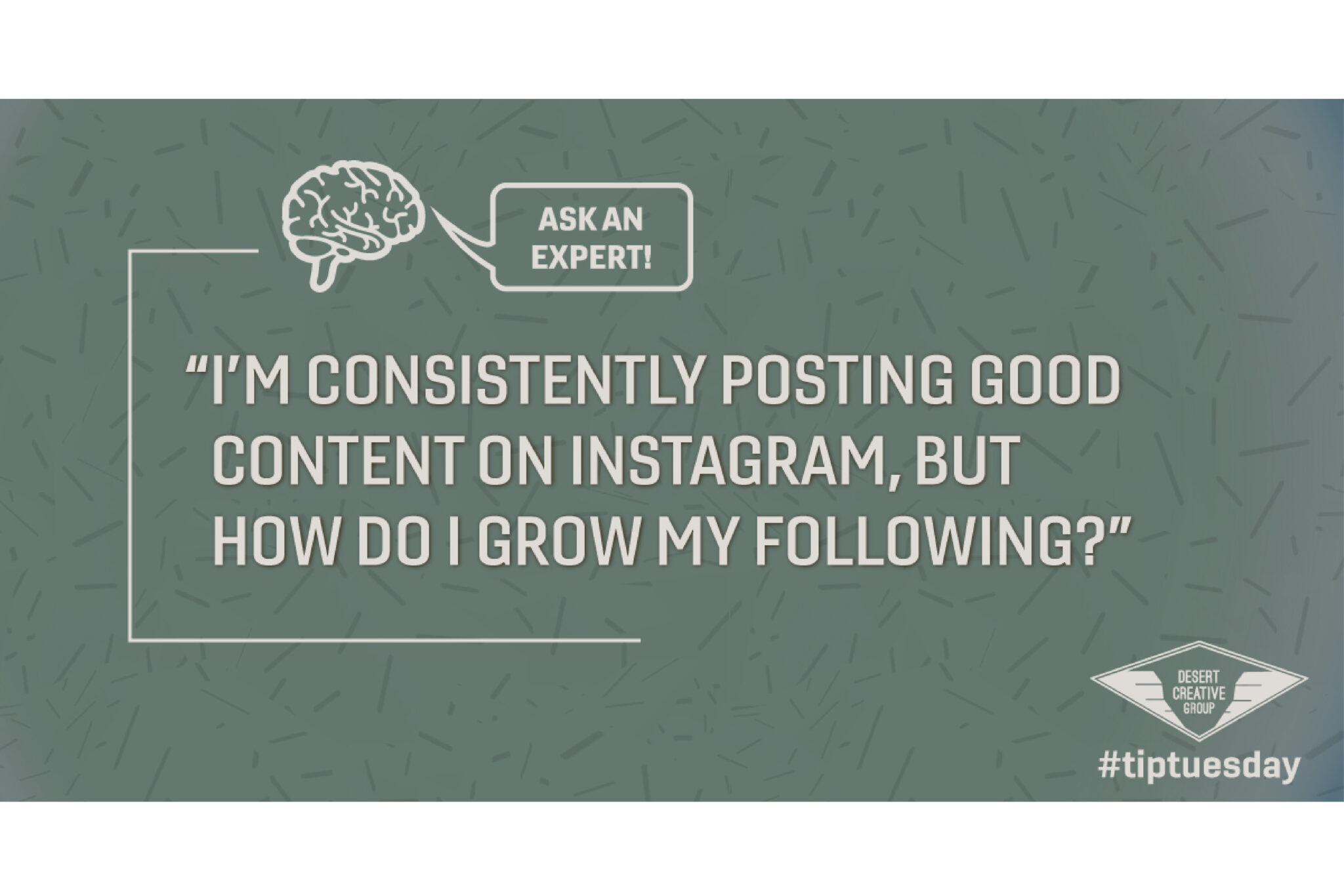June 1st, 2021 – Weekly Marketing Tips to Elevate Your Marketing Skills
Join our weekly Tip Tuesday community by subscribing here


If You’re Not Performing Keyword Research Before You Write Your Blog Posts, You’re Missing Out On A Lot Of Potential Search Traffic!
If you’re writing blog posts for your website, there’s a huge chance that the ultimate goal of those blog posts is to pull in organic search traffic to your site. After all, content marketing is one of the leading marketing principles being practiced in digital marketing.
So if we’re writing content that our audience values and are searching for, the question is, is that content actually bringing in relevant search traffic, or is our content being lost in the digital void?
There are many, many variables when it comes to search engine optimizing your content, but for now, we’ll just discuss long-tail keywords. Keywords really are the backbone of SEO, after all.
Shorter, Popular Keywords are Harder to Rank For
Unless you have a website that gets hundreds of thousands of visitors a day, it can be challenging to rank for shorter, popular keywords. So what do we do?
While it might be hard to rank high for a keyword like “social media”, if we focus on several long-tail keywords we’ll be much more likely to rank higher, and more importantly, the relevance of your content is more likely to be what your visitor is actually searching for. What is a long-tail keyword? They are longer and more specific keyword phrases that visitors are more likely to use when they’re closer to a purchase or when they’re using voice search. Now, if we were to write a blog post about social media, but focus instead on long-tail keywords such as, “B2B Social Media Lead Generation” or “How to get sales leads from social media” – the chances of us ranking in the first few pages on Google are significantly higher.
Utilize Related Keywords
On Google, there is a whole section at the bottom of every page that shows you similar, related search queries that other people often search for when they are looking for the same thing. Use this to your advantage! The technical term for these related keywords is Latent Semantic Indexing (LSI) Keywords. Google starts to understand that someone truly searching for information for certain topics might be more likely to benefit from a piece of content that ALSO contains certain other phrases and topics. Part of your keyword research should also be including information on related keywords as well.
Your Keywords Need to Flow Naturally in Your Content
Google has changed over the years to favor high-quality content…and believe us…their logarithm is INCREDIBLY smart when it comes to not only scanning your content but also reading people’s behavior once they land on your site to know how relevant it was to their search. The internet is flooded with mediocre content, so if you’re spending the time, energy, and resources to produce blog content, make sure they are as useful as possible to your audience and not just jam-packed with keywords. You’d be better off leaving a keyword or phrase out of a heading if it doesn’t flow than to jam it in anyways.
Use Tools to Find Long-Tail Keywords, Related Keywords, and Their Data
Now that you know you need to utilize longer keywords to get the most out of your blog posts and to help plan your content topics, you might be asking, “Do I need to research these things manually and how long does that take?”
The good news is there are many tools out there that make your keyword research a breeze. Not only do they give you an idea of the keywords you might want to use, but they’ll also give you the data so you know if a keyword is worth using. This is huge. I’ll repeat it. Not every keyword or phrase is worth using. If hardly any people are actively searching for a specific topic, no matter how important of a topic you may think it is, with this knowledge you may rethink how you deliver that topic, the context you put it in, or if you even spend the energy writing it at all.
Check out our featured tool below for a recommendation on something to help you with your keyword research.
Ask an Expert

Ah, the dilemma for the age…growing your social followings and in particular, Instagram.
This is a question we get asked and something we see all the time. You spend hours and hours planning, producing, and posting amazing content….and even better, you’re incredibly consistent with it too! You’re doing everything right that you’ve been told on growing your audience…but you don’t seem to be growing as much as other pages, as fast your goals, or you’ve reached a plateau that you can’t seem to get over.
While high quality, consistent content is really important – it really is – the most impactful thing we’ve seen contribute to rapid growth is…ENGAGEMENT.
There are two main types of engagement that we’re talking about. 1) being engaging with people you follow and who follow you back. This includes replying to comments people leave on your posts, liking and commenting on people’s posts that you follow, etc. 2) actively engaging people who don’t follow you. #2 is the biggest. Search some content (using hashtags) that your ideal audience is posting under – for example, if you sell services to real estate agents, find a couple of popular hashtags related to what a real estate agent might be using when they post to their account and just start interacting with them! You’ll see that a good number of them at least go check out your page, leave a few likes, and possibly follow your page if they like what they see.
You should make time for engaging new people every day. Remember though, you can only like, follow, and comment a certain number of times an hour before Instagram blocks your account for looking like a spam bot. Do short bursts a few times a day if you can. If you do this 2-3 times a day and spend 5-10 minutes each time doing it, at most you’ll have spent 30 minutes of your day actively growing your audience. This can seem time-consuming or overwhelming though, so if you don’t have the time, any company that provides social media services (like us ;D) usually provides regular engagement as a service that you can book too.
A couple more tips we’ll leave you with too. As nice as it is to daydream about a post going viral and you gaining thousands of followers overnight – the likelihood of it happening is pretty low. Be realistic with your growth goals. Also – if you want people to share your content to grow your audience…create highly shareable content in the first place. Research what types of content your audience is willing to share with their followers and infuse some of that content into your content calendar.
____________________________________________________________________________________________


This week’s recommended tool is Keysearch!
Keysearch is an affordable, easy to use tool to see related keywords, how well those keywords perform, how competitive they are to rank with, competitive sites that use those keywords, and how many people are actively searching with those keywords or phrases per month (super important, as there’s no reason to rank high for a keyword or phrase when no one is searching for it!).
You can easily filter through the data and base it on local results and queries to your business, Google or other search platforms, Youtube rankings, and more! Another huge perk is that you can run checks on your website (or competitors) to see domain strength, how many backlinks the site has, and what keywords are already ranked high for that website.

Check Keysearch out for Yourself!
They have a 1-month free trial to test it out!
_____________________________________________________________________________________________

When is it time to change the narrative? The pandemic and its devastating effects still persist, leaving many of us cautiously optimistic about how 2021 will play out. This is the perfect time to take a moment to reassess. Here are 4 questions to ask yourself and your business partners when considering whether or not it’s time to change the narrative:
✴️ What is your SWOT analysis of the current market? (Strengths, Weaknesses, Opportunities, Threats) Is the problem your business solves still relevant?
✴️ How efficient is your organization from an operational standpoint? Simplifying your systems may lead to additional opportunities or help build the case for change.
✴️ Do you have the capacity to explore transformation? If you are currently working on other major initiatives it may be difficult to be successful in both areas at the same time.
✴️ Can you reframe your current struggle into a positive statement? Use the idea of changing the narrative on a smaller scale first. For example: “We don’t have enough inventory” can be turned into “There is a huge demand for our product.” Sometimes rewording an issue can lead to a solution.












